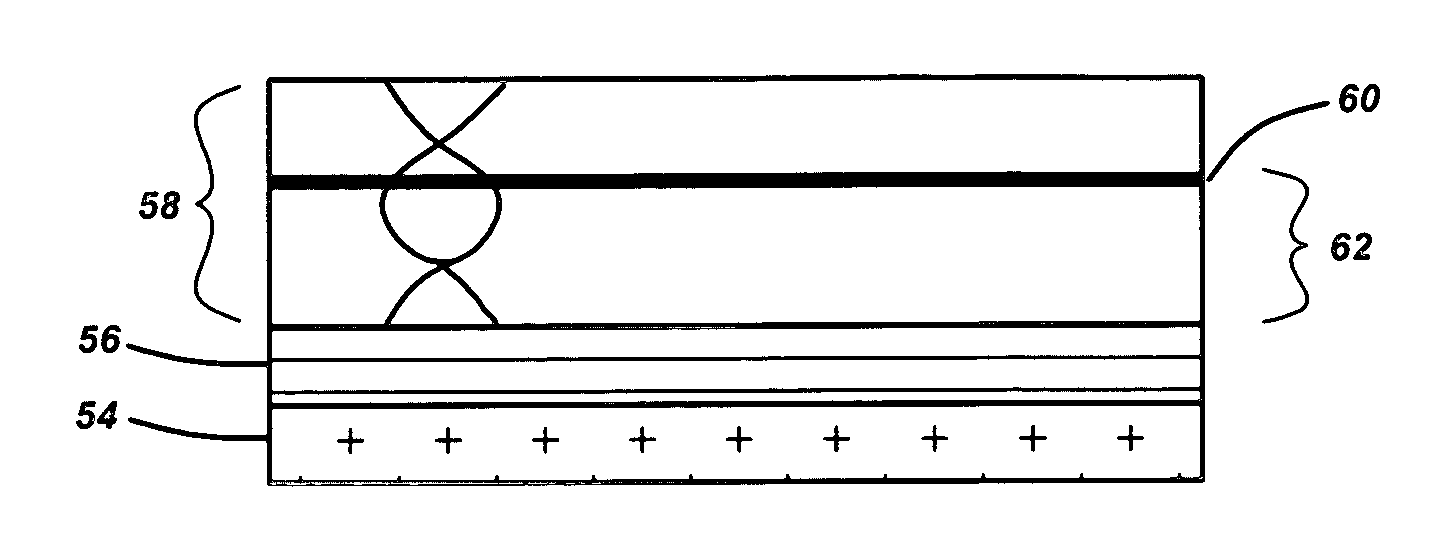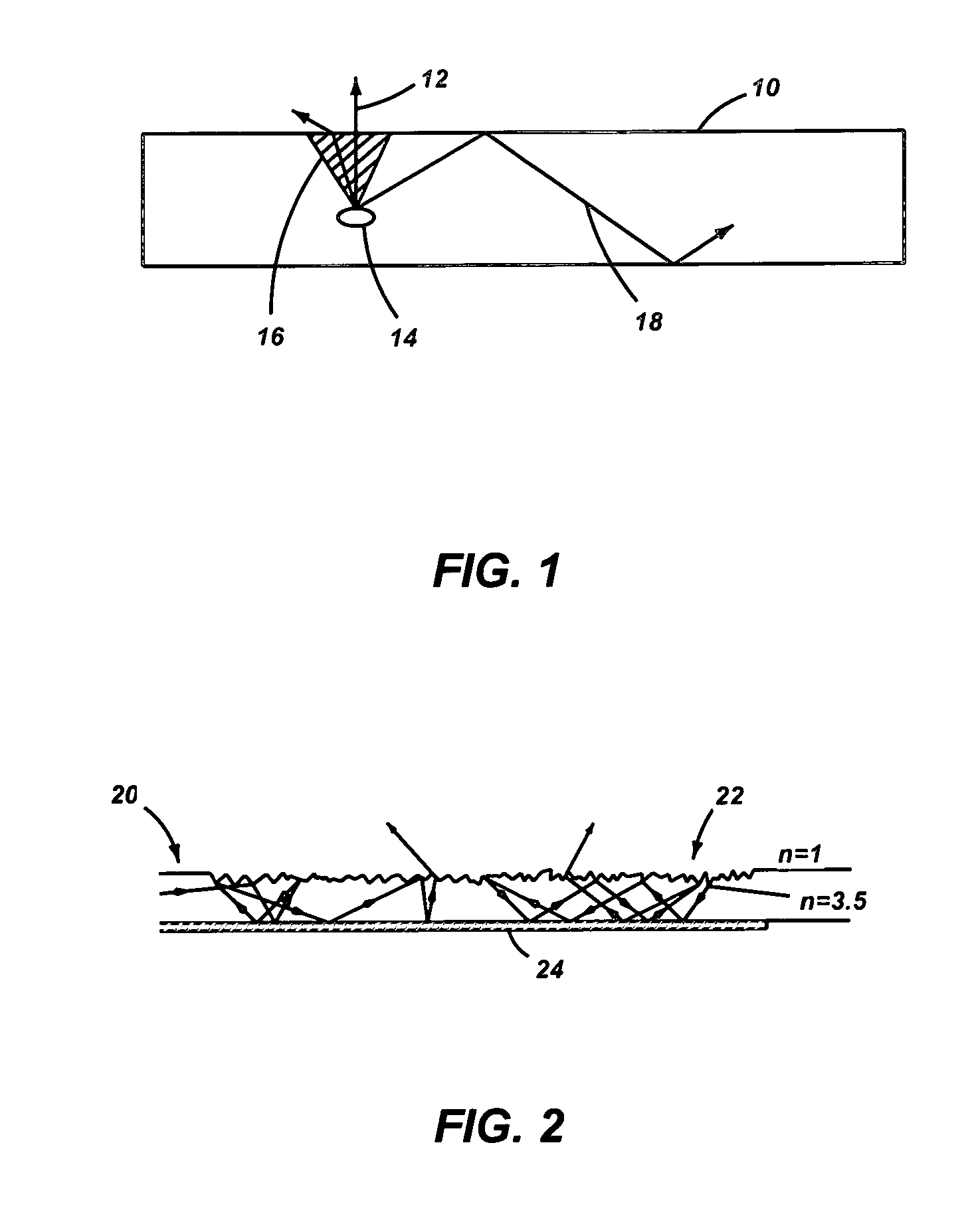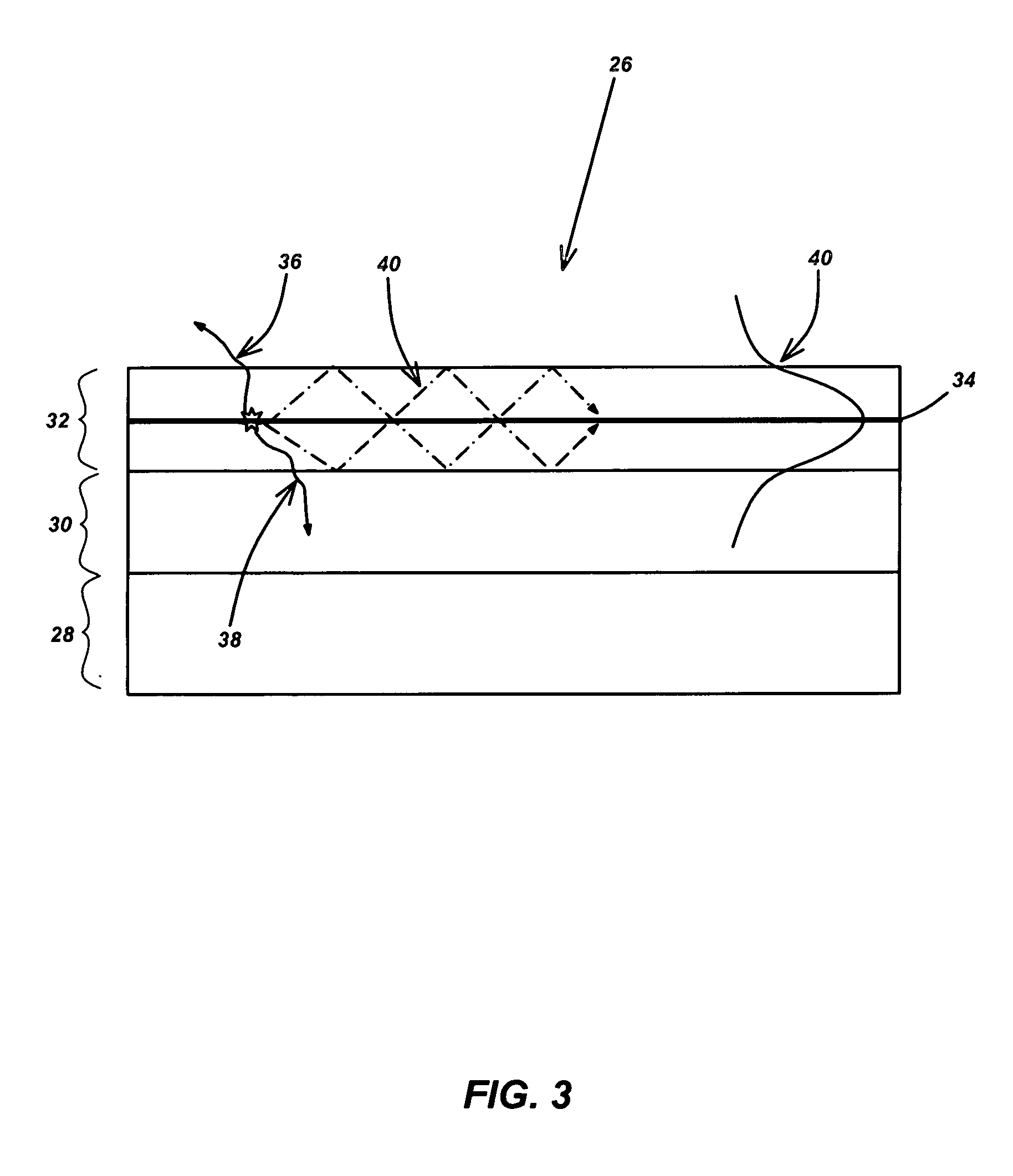Single or multi-color high efficiency light emitting diode (LED) by growth over a patterned substrate
a light-emitting diode, single or multi-color technology, applied in the direction of electrical equipment, semiconductor devices, radio frequency control devices, etc., can solve the problems of low yield, limited index contrast of materials epitaxially grown, and loss of most of the light emitted within the semiconductor led material, etc., to achieve high extraction efficiency
- Summary
- Abstract
- Description
- Claims
- Application Information
AI Technical Summary
Benefits of technology
Problems solved by technology
Method used
Image
Examples
Embodiment Construction
[0045] In the following description of the preferred embodiment, reference is made to the accompanying drawings which form a part hereof, and in which is shown by way of illustration a specific embodiment in which the invention may be practiced. It is to be understood that other embodiments may be utilized and structural changes may be made without departing from the scope of the present invention.
OVERVIEW
[0046] The present invention describes new LED structures that provide increased light extraction efficiency while retaining a planar structure. The planar structure makes the new LED structures easily manufacturable at low cost.
[0047] Preferably, the structure comprises a substrate, a buffer layer grown on the substrate, a patterned layer deposited on the buffer layer, and an active layer including one or more emitting species (some of which are current-injected) formed on the patterned layer, for example by Lateral Epitaxial Overgrowth (LEO). The patterned layer comprises a pa...
PUM
 Login to View More
Login to View More Abstract
Description
Claims
Application Information
 Login to View More
Login to View More - R&D
- Intellectual Property
- Life Sciences
- Materials
- Tech Scout
- Unparalleled Data Quality
- Higher Quality Content
- 60% Fewer Hallucinations
Browse by: Latest US Patents, China's latest patents, Technical Efficacy Thesaurus, Application Domain, Technology Topic, Popular Technical Reports.
© 2025 PatSnap. All rights reserved.Legal|Privacy policy|Modern Slavery Act Transparency Statement|Sitemap|About US| Contact US: help@patsnap.com



